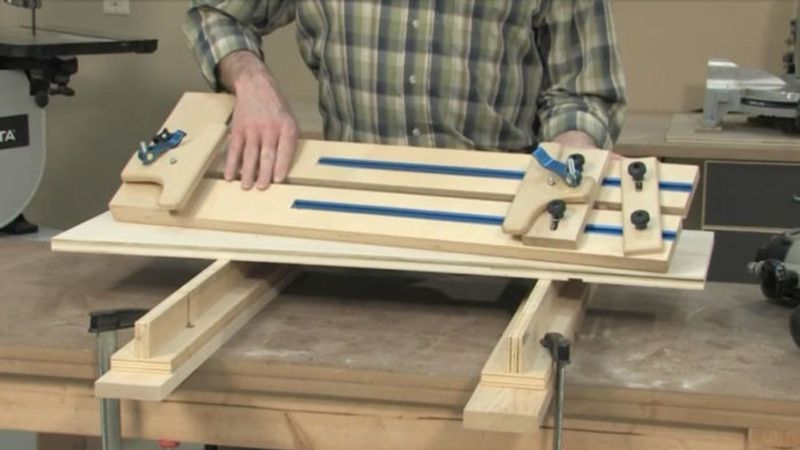Dado Jig Tackles Shelves of Any Thickness
Learn how to cut accurate dadoes using this fully adjustable router jig.

The traditional router jig used to cut dadoes often involves wrestling with C-clamps to hold it in place, and requires the calculation of an offset to align the jig and bit with the location of the dado. In short, when faced with several dadoes—say on a case side—it can be a bit tedious.
Woodworker Kent Shepherd’s clever jig makes cutting multiple dadoes a breeze. Although it requires a bit of time to construct, this jig more than pays for itself in ease-of-use, adjustability, and accuracy.
The jig sports an integral clamping system that secures it to the workpiece using simple cam-clamps. With one fixed rail and one adjustable rail, it’s easy to dial in the thickness of your shelf material for a dead-on fit. Plus, the jig’s inner edges act to prevent chipout along the edges of the cut, leaving you with clean, gap-free joinery.
Watch the video for a complete overview on how the jig works, and learn how to build it yourself in FWW #226. Plus, put this jig to use building a beautiful bookcase of white oak in our Getting Started in Woodworking video series.






Comments
Hi I have the magazine that shower all the parts to make this jig. I want to make one but I did not see any hardware parts list ( sizes for the bolts and levers.
Do you have that list and how can I get it.
Jeff
I made the jig last year and it works great. Saves a lot of setup time.
Greg
Or, you can just use your cabinet saw to make 90% of you dados with a good fence or sled. That would be quicker and just as accurate and would be one less jig in shop. Just a thought!
But the cabinet saw is not so good for stopped dados.
Here is an even more simple jig, which does the same thing, but without the expense of the T-tracks. Like this one, all the clamps are built in, but everything is done from the top.
To see my version, type "kelly craig's dado jig" into your browser, or go to the instructibles web site and check out the projects under my name.
The L-Shaped jig shown initially in the video is far easier to construct and use, and if desired, you could make a couple to tailor to different ranges of dado widths. By the time you properly set up and secure the elevated work surface supports needed to use the "fancier" jig, you could be finished cutting your dados with the simple L-Shaped jig.
Log in or create an account to post a comment.
Sign up Log in